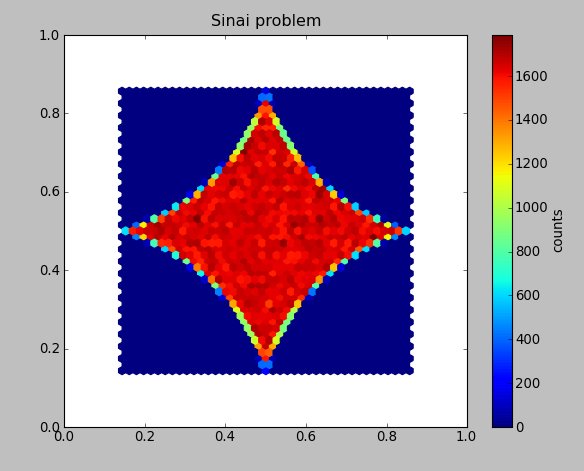ICFP NumPhys Paris
HW3 is online, on Friday 22th, lectures on ED in conf IV room at 2pm
QMC: the rule of the game
[1] Take your laptop with you.
[2] Bring your notes, your books, your teddy bear...
[3] Use internet, but do not exchange e-mails, chats, tweets....
[4] Adopt a Checkerboard configuration with 4 empty seats as nearest neighbour.
[5] The QMC starts at 2 pm. We strongly recommend a good breakfast and a light lunch.
Course description
NumPhys is a general course in Computational Physics, with applications in Statistical Physics and Condensed Matter. We cover the many algorithms used in modern many-body problems: molecular dynamics, Monte Carlo (classical and quantum), exact diagonalization and optmization in complex landscapes. Implications to computer science are also discussed. We focus on algorithms and physics, not on programming and heavy numerics. The theoretical lecture is followed by a tutorial introducing many concrete numerical exercises. You will have to hand in 3 homeworks.
Team
- Alberto ROSSO (LPTMS, CNRS et Université Paris-Sud, Orsay)
- Guillaume ROUX (LPTMS, CNRS et Université Paris-Sud, Orsay)
- Marcello CIVELLI (LPS, Université Paris-Sud, Orsay)
Schedule
- Lectures on Fridays: 14.0-16.00
- Tutorials on Fridays: 16h00-18.00
- ENS, 24 rue Lhomond, room Conf IV (2nd floor)
Here you find the scheduling of Lectures, Tutorials and Homeworks
Language
The working language for this course is English.
Programming Language: Python 3. See Memento Python
No previous experience in programming is required.
You need first of all to have Python installed with at least modules NumPy, SciPy and matplotlib.
Grading
3 homeworks (10 points each) + 1 MCQ (20 points) + 1 oral exam (50 points)
WIFI
The WIFI network is: PHYS-GUEST
The WIFI password for this networks is: PhysiqueENS
Then you can run a navigator (Firefox, Chrome, IE, Safari...)
Accept the certificat and enter the password: numerical.physics@phys.ens.fr
Quizzino
here you can find a link to the QMC teaser
The solution of the teaser is:
Q1: C
Q2: D
Q3: B
Q4: B
Q5: B
Q6: A (B is also correct because in Program B16 p_minus is actually p_plus: sorry!)
Q7: A
Forum
here it is please register
References
- SMAC W. Krauth Statistical Mechanics: Algorithms and Computations (Oxford: Oxford University Press) (2006)
- Other references are specified in each lectures
